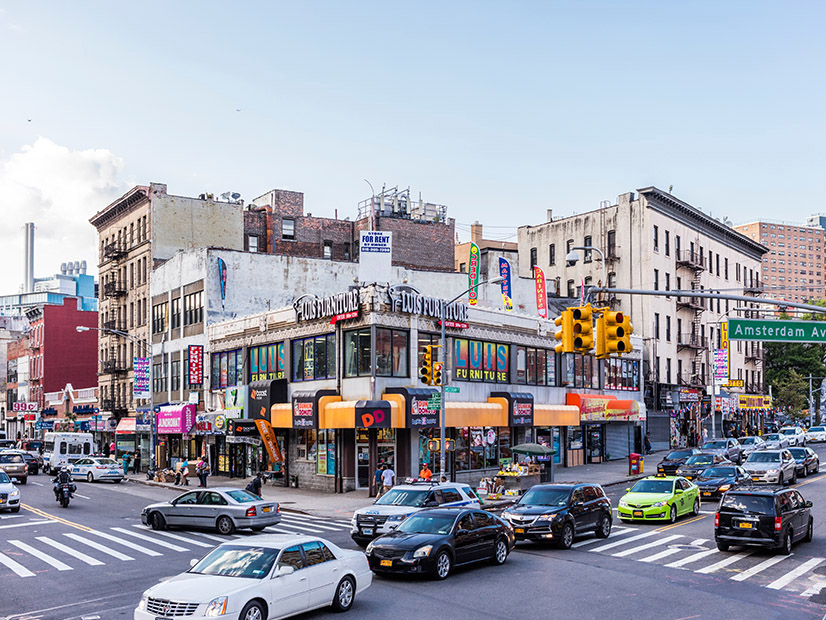
The New York State Energy Research and Development Authority (NYSERDA) received authorization last week to ensure that the benefits of the state’s $6 billion Clean Energy Fund are in line with the Climate Leadership and Community Protection Act (CLCPA).
The state Public Service Commission approved an order that adopts NYSERDA’s proposal to set a new goal for the fund to deliver 40% of benefits of spending to disadvantaged communities. The order, which followed a review of the fund, also adopts a goal for 35% of NY Green Bank’s post-2019 investments to benefit disadvantaged communities.
“These goals will significantly improve benefits to disadvantaged communities as compared to historic performance and are in compliance with the CLCPA,” Peggie Neville, director of efficiency and innovation at the New York Department of Public Service, said during the PSC’s regular meeting.
The fund covers NYSERDA’s ratepayer-supported initiatives under four portfolios, which include market development, innovation and research, NY Green Bank, and the NY-Sun solar incentives program.
Under the CLCPA, state agencies must ensure that disadvantaged communities receive 40% of resource benefits. The act also stood up the New York Climate Action Council, which has been developing a state scoping plan for release later this year to achieve the state’s climate and energy goals.
The order acknowledged that the commission might need to revisit the fund after the council completes its scoping plan process and called for another fund review in 2023. It also recognized the ongoing work of the Climate Justice Working Group to develop a definition of disadvantaged communities by the end of the year, but the order adopted interim criteria for those communities.
The criteria are “communities located within census block groups that meet the U.S. Housing and Urban Development (HUD) 50% adjusted median income threshold, that are also located within the [Department of Environmental Conservation] Potential Environmental Justice Areas or are located within New York State Opportunity Zones.”
According to the order, NYSERDA will now have to track and report on benefits that include:
-
-
- level of direct investment;
- energy savings;
- energy bill savings;
- measures of economic development, such as workforce training and jobs supported; and
- air quality improvements directly resulting from clean energy investments in disadvantaged communities.
-
After the Climate Justice Working Group finalizes its definition of disadvantaged communities, NYSERDA will have 60 days to file a plan, based on stakeholder input, for how it will meet the 40% benefits goal.
NY Green Bank
In the order, the commission approved NYSERDA’s request for a series of financial commitments under the NY Green Bank that target technologies other than solar to help diversify the bank’s activities.
“While NY Green Bank has played an important role in spurring the development of solar PV installations, investments to date have been predominantly in the solar sector,” it said.
The commission authorized additional investments of $150 million for clean energy improvements in affordable housing properties, $100 million for clean transportation businesses in New York and $200 million in energy storage-related investments. NY Green Bank has $1.2 billion of committed investments through 2020, according to the order.
In addition, the bank must update its metrics, evaluation and reporting plan through stakeholder input to ensure its offerings “deliver true benefits to disadvantaged communities.” The bank will have six months to complete the update.

